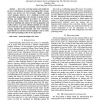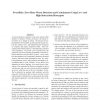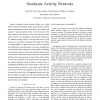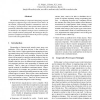122 search results - page 6 / 25 » Modeling the Spread of Active Worms |
GLOBECOM
2006
IEEE
14 years 2 months ago
2006
IEEE
— Due to the real time nature and buddy list presence information of Instant Messaging (IM) systems worms can spread over IM networks rapidly, causing severe damages, however, it...
CN
2007
13 years 8 months ago
2007
As next-generation computer worms may spread within minutes to millions of hosts, protection via human intervention is no longer an option. We discuss the implementation of SweetB...
IEEEIAS
2009
IEEE
14 years 3 months ago
2009
IEEE
A computer worm is an autonomous malicious, selfreplicating and propagating piece of code that is able to spread fast in computer networks, exploiting the vulnerabilities it disco...
SPRINGSIM
2007
13 years 9 months ago
2007
— Stochastic activity networks (SANs) are a widely used formalism for describing complex systems that have random behavior. Sophisticated software tools exist for the modeling an...
DISCEX
2003
IEEE
14 years 1 months ago
2003
IEEE
We introduce models for cooperative mitigating response strategies to suppress large scale Internet worm attack. In our models, cooperating members communicate with others using a...




